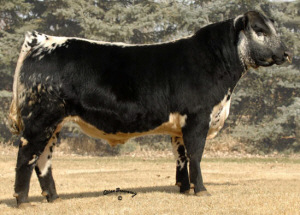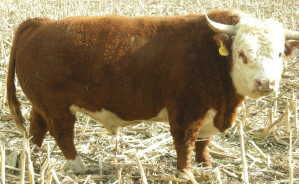



Romagnola
History
The ancestors of the breed Romagnola (pronouced 'Roma - nola') were the Bos primigenius podolicus - a wild ox which lived on the Italian peninsula, and to a great extent, from the Bos primigenius nomadicus, a bovine originating in the Euro-Asian steppes, which came to Italy during the fourth Century A.D. with the Gothic invasion led by Aginulf.
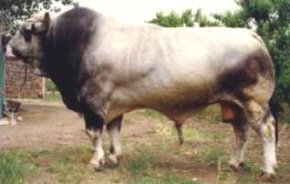 Photo courtesy of Ville Unite Romagnola, www.romagnola.it |
Through history the Romagnola was used as a draught animal assisting in tilling the plains and their beef was a secondary product. The fertile soils and high quality forage contributed significantly to the evolution of a progressively more muscular type while the continued use of Romagnola as living tractors ensured their structural soundness and dynamic traits.
International interest in the Romagnola has been steadily increasing since the first cattle left Italy for Scotland in the early 1970s, and are becoming a very popular beef breed.
Characteristics
The Romagnola is ivory to light grey in colour with black pigmented skin including the muzzle, horn tips, hooves and tail switch. They are horned which are lyre-shaped in cows and half-moon shaped in bulls - a distinctive characteristic. Their colouring helps them in hot climates and they grow dense coats in winters.
The Romagnola is a robust animal showing marked evidence of thickness and muscularity the bulls weighing approximately 1250kg and the cows 750kg.
A study of its proportions, (the rib cage is at least as deep as the distance from the brisket to the ground), places the Romagnola among the meso branchy-morphous breeds.
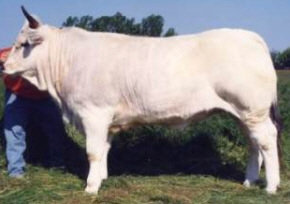 Photo courtesy of Ville Unite Romagnola, www.romagnola.it |
Romagnola cows are well known for their ease in calving. Calves are sturdy, alert, and are usually up and nursing quickly after birth. Romagnola milk is rich and produces weaning age calves that weigh 500 to 700 pounds at 205 days. The udder is well tucked under her and the teat placement is correct.
The top line and hindquarter are the areas where the beef producing ability of the breed is most obvious.
Statistics
Comparative
The 1993-1995 Texas A&M Ranch to Rail Study of over 240 composite breeds shows Romagnola crossed steers to be superior in that they have:
Texas A & M University
Distribution
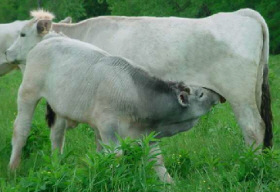 Photo courtesy of Duck River Romagnola, duckriverromagnola.com |
References (the above information was cited from the following sites)
www.romagnola.com
www.romagnolabeefgenetics.com.au
www.romagnola.it
duckriverromagnola.com

